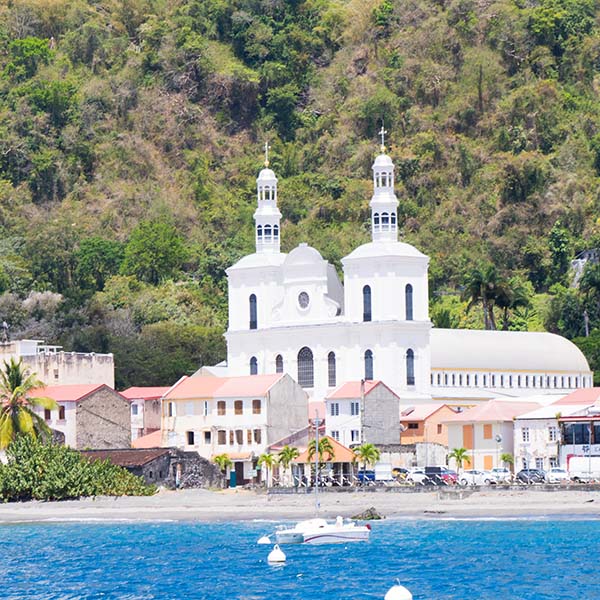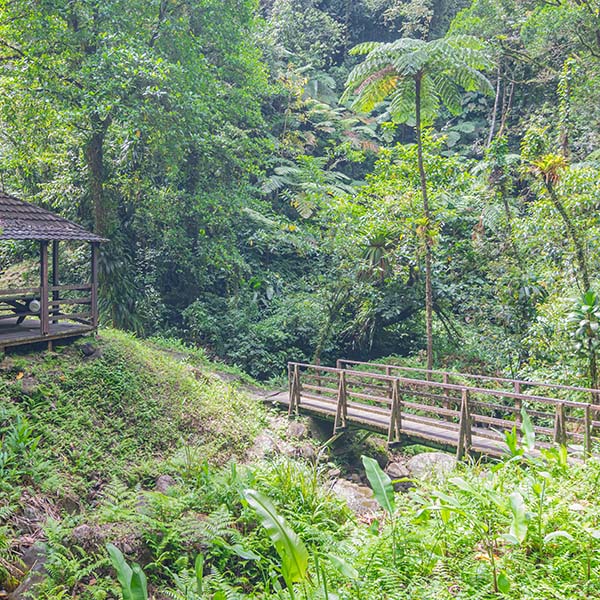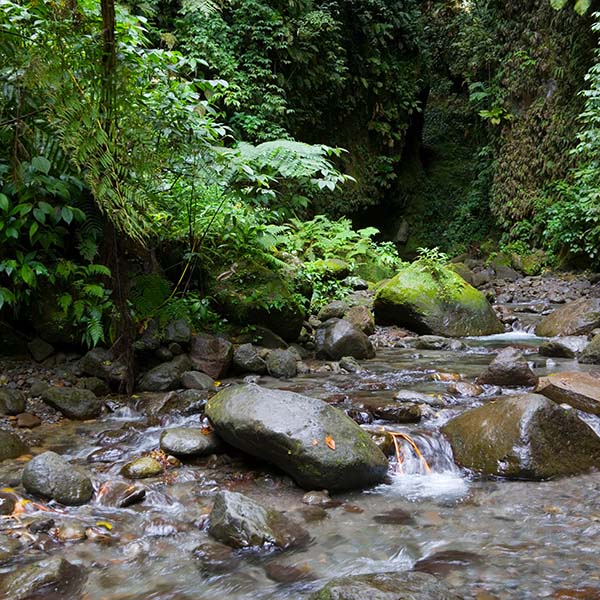Car rental in Martinique is ideal for exploring the north of the island, an authentic and preserved region that offers breathtaking landscapes where wild nature meets a rich history. Between mountains, lush forests, wild beaches, and remnants of the past, this part of the island immerses you in an intact and fascinating environment, away from the hustle and bustle of the south. Whether you’re a hiking enthusiast, a history buff, or simply seeking tranquility, the north of Martinique will amaze you with its authentic atmosphere and natural treasures. Here are the must-see highlights to discover during your exploration.
1. Mount Pelée
Mount Pelée is one of the most famous symbols of Martinique. This active volcano, rising to 1,397 meters, is the highest peak on the island. Its eruption in 1902 destroyed the city of Saint-Pierre, marking a significant event in Martinique's history. For hiking enthusiasts, climbing Mount Pelée is a unique experience. The view from the summit, on a clear day, offers spectacular panoramas of the entire island and the surrounding islands.
2. Saint-Pierre, city of art and history
Once nicknamed "the Little Paris of the Antilles," Saint-Pierre was the economic and cultural capital of Martinique before being destroyed by the eruption of Mount Pelée in 1902. Today, this city is steeped in history, where you can visit the ruins of the old town and its volcanological museum. Stroll through the streets of this partially reconstructed ghost town, where remnants of the past blend with modern life.


3. Balata Garden
Located just a few kilometers from Fort-de-France, Balata Garden is a true tropical paradise. This botanical garden is home to thousands of species of tropical plants and exotic flowers, all set in an enchanting environment. The winding paths, suspended walkways among the trees, and panoramic viewpoints offer a unique experience in the heart of Martinique's nature. A must-visit for nature lovers.
4. The Trace Road
The Trace Road (N3) is one of the most beautiful roads on the island, winding through the mountains and tropical rainforest. Built by the Jesuits in the 17th century, it connects Fort-de-France to the northern part of the island, offering stunning views of the lush vegetation. Along the way, stop at the Sacré-Cœur de Balata Church, a miniature replica of the Basilica of the Sacré-Cœur in Montmartre, Paris, perched on a hill with breathtaking views of the bay.
5. The Gorges de la Falaise
Located near the town of Ajoupa-Bouillon, the Gorges de la Falaise are a natural wonder where you can experience an unforgettable adventure. This small river winds through narrow canyons, offering spectacular landscapes. Hiking in the gorges allows you to walk in the water, climb on rocks, and explore waterfalls, all amidst lush vegetation. It’s a refreshing and immersive experience for adventure enthusiasts.
6. The village of Grand'Rivière
At the northernmost tip of the island, Grand'Rivière is a small fishing village nestled at the foot of the mountains and by the sea. It is one of the most authentic villages in Martinique, far from the tourist trails. Here, you'll find a peaceful atmosphere and breathtaking scenery, with steep cliffs and pebble beaches. It is also the starting point for a beautiful hike that follows the Atlantic coast to Anse Couleuvre beach.


7. Anse Couleuvre Beach
Anse Couleuvre Beach, located at the northern tip of Martinique, is one of the island's most beautiful wild beaches. Accessible after a short hike through the tropical forest, this black sand beach is bordered by lush cliffs and offers stunning views of the Caribbean Sea. It’s an ideal place to relax, swim in crystal-clear waters, or explore the underwater world with a mask and snorkel.
8. Domaine d'Émeraude
Located in Morne-Rouge, Domaine d'Émeraude is a vast natural park dedicated to discovering Martinique's biodiversity. This site features marked hiking trails through the tropical forest, where you can observe a wide variety of endemic plants and animals. The interpretation center also offers exhibitions on the natural history of Martinique, making it perfect for families and nature lovers.
9. The Slave Canal (or Beauregard Canal)
The Slave Canal is a historical remnant built by enslaved people in the 18th century to irrigate sugarcane plantations. This canal runs along the steep slopes of the mountains, offering a unique hike with breathtaking views of the tropical forest and mountains. The sometimes dizzying trek allows visitors to understand the island's painful history while enjoying the beauty of the surrounding nature.
The north of Martinique is a region full of contrasts, where wild nature intertwines with the island's rich history. Whether you are a hiking enthusiast, a history buff, or simply seeking tranquility, this part of Martinique will amaze you with its spectacular landscapes and authentic atmosphere.










